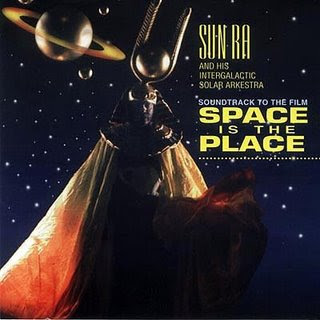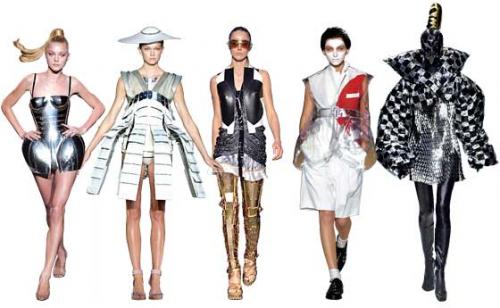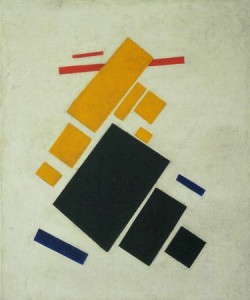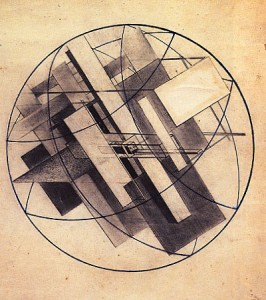 Hi everyone – just a reminder: Michael Filimowicz will be guest-lecturing Wednesday’s seminar. Currently teaching at the SFU SIAT, he is developing a public-art project for the city of Surrey, and has exhibited a range of creative film and photographic projects, in addition to publishing short stories in science-fiction. He specializes in sound design.
Hi everyone – just a reminder: Michael Filimowicz will be guest-lecturing Wednesday’s seminar. Currently teaching at the SFU SIAT, he is developing a public-art project for the city of Surrey, and has exhibited a range of creative film and photographic projects, in addition to publishing short stories in science-fiction. He specializes in sound design.
Monthly Archives: January 2009
Chewbacca’s Voice and Other Vital Matters
kaitlyn (Kat) here… a few random things from today’s class that i just remembered!
1)) actual written proof that chewbacca’s voice is actually a mash of random sounds:
Chewie’s voice was a combination of numerous animal sounds from Sound Designer Ben Burtt’s personal library. Walruses, camels, bears and badgers were all blended in different ratios to come up with Chewbacca’s various utterances. One of the key ingredients in the mix was the sound of Tarik, a black bear from the Happy Hollow Zoo in San Jose, California. Tarik passed away in 1994 due to congestive heart failure.” (source: nerd star wars bank)

2)) is anyone here into Sun Ra or similar 1960’s Afrofuturist/avant garde jazz artists? Sun Ra is amazing as far as pure visionary genius (some would say manic/craziness) and the visuals of Blade Runner and other related sci fi films always remind me of Sun Ra’s music. If you haven’t already, I’d definitely recommend checking his stuff out– especially anything from ‘Space is the Place.’
Sun Ra and his ever-changing ensemble band was known in 1960’s NYC for certain things: being crazy, making crazy music, wearing awesome egyptian/space themed outfits, and Afrofuturism. “Claiming that he was of the “Angel Race” and not from Earth, but from Saturn, Sun Ra developed a complex persona of “cosmic” philosophies…” and as a result was one of the first Black pioneers to use science fiction as a means of creating a bizarre utopian re-invention of Black History, tracing it from Ancient Egypt to futuristic Black colonies in space.
…here’s a few pictures which i think show what he was all about better than me trying to talk about it:




01/14: “Hiding in all this is some kind of tomorrow -”
A brief partial-summary of last wednesdays seminar:
we opened with a short, non-committal discussion around Hatherley’s article, which I thought I’d summarize and intersperse with points from our discussion:
– the essay introduces Taylor as an American Cybernetician , whose meathod of regulating and rationalizing labour was pivotal in what Lenin saw as a means of “preparing the grounds for a system that will supersede capitalism” – as Hatherly puts it: “we could read Lenin’s Taylorism as a liberating theoretical leap. A harnessing of mechanisation and efficency, of mathematical infallibility, to a radically democratic Communist society”
He frames Zamyatin’s novel in this context, departing from the idea of We as simply a cautionary tale, a critical attack on the ideologies it appears to satirize. Instead Hatherly looks at the book as more oblique, ambiguous and complex.
– within the satirical exaltations of Taylorism is “a sincere wonder at the possibilities of the machine” manifest within Zamyatin’s aesthetic: we noted that, barring the Integral and the executional “Machine”, there is an apparent lack of technology within the book. Instead, the form imposed on the narrative (discussed previously) functions as a kind of embodiment of the technology that in part inspires its fascination – affording a perspectival shift in the blurred, fragmentary relaying of thought and imagery; the increased velocity of a “technological” epoch – the book reads like a landscape as seen from an automobile, an airplane.
(on the tangent of aesthetics, El Lissitzky and his (children’s?) book About Two Squares was mentioned briefly, as employing form in its minimal, elemental construction, as a means of communication and propaganda – how does the form of Lissitzky’s art – and of constructivist art in general – relate to that of Zamyatin’s writing?)
– Hatherly answers this question directly: “We is on one level an extrapolation and expansion of Constructivism, the utopian art movement of the period, which aimed at a transformation of everyday life at its smallest levels, harnessing art to production.”
– at the time in which We was written, it is noted that – ravaged by civil war and dissolved through mass migration – both economically and technologically the Soviet Union was crippled: “At this point in the Soviet Union there were barely factories at all, let alone the Taylorised glass constructions dreamt of by Lenin, Rodchenko or Zamyatin. Taylorism had the power of the purest of fantasies.”
Hatherly concludes by distilling a broken optimism from the book, acknowledging the kinds of potentials within the rationalist construction that is both denounced and ratified through Zamyatin’s book:
” Contained within the novel and in the Constructivism it satirises is a promise of a transformation of everyday life via technology that is in part based on the possibilities of fantasy…there is something bracing about these austere, rationalist constructions in their collectivity and idealism, a broken promise still riven with poignancy.”
– moving away from the essay, the topic of propaganda came up in relation to the function of the Integral. The ship, while destined for other, off-planet civilizations, is more a propagandistic tool for OneState itself – providing a public work that encapsulates a collective voice of self-aggrandizement repeated through its continued construction.
Some cool things that have drawn influence from Blade Runner.
 m83’s album ‘Before the Dawn Heals Us’ is soaked in Vangelis’ aesthetic.
m83’s album ‘Before the Dawn Heals Us’ is soaked in Vangelis’ aesthetic.
Here’s something about another of m83’s albums:
“I thought immediately of two different things when listening to Digital Shades, Vol. 1. The first is Vangelis’ soundtrack for Blade Runner. There is something in M83’s songs that was also inherent in Vangelis’, that being the theme of a machine striving to be human.”
Here’s a great song by them:
M83 – Teen Angst

Blade Runner has also had quite a lot of influence on the fashion industry.
 “You’ll Rent BladeRunner for Wardrobe Guidance.
“You’ll Rent BladeRunner for Wardrobe Guidance.
Dolce & Gabbana looked to Judy Jetson for inspiration, while Balenciaga’s vibe was more Tron. Comme des Garçons played both sides (a plastic trench over a relatively old-fashioned suit), while Brit favorite Gareth Pugh’s fembots were dressed for Area 51. The future has arrived: Here’s what to wear.”
A couple of links:
Junko Shimada’s Bladerunner inspired Fall/Winter 08
A gallery of Bladerunner’s fashion
Post-Humanism and Ecocide in William Gibson’s Neuromancer and Ridley Scott’s Blade Runner
Kind of related
This picture is from Burning Man a couple of summers ago, which was themed “Future: Hope or Fear?” People could vote one way or the other at stations around the camp, and this pavilion reflected the scores. It might be too small to see, but the clock thingy at the center says that fear was winning! Yay! Also, the “man” would change depending on the score: arms down= fear is winning, arms up= hope is winning.
The pavilion is designed to reflect the theme, so it changes every year. Interestingly, this “future” pavilion seems to match Metropolis‘s 1920s art-deco-ish vibe. I thought it was pretty cool, but… it burned down. Oh well!
Bonus fun activity: see how many crazy hats you can spot
the cosmic suburban
Lifting suburbia from its terrestrial confines, these 70’s space-colony renderings express a desire to preserve normality in an era of upheaval. Above the clouds of atomic test explosions and the turbulence of social liberalism, these colonies of four-bedroom houses and freshly-mowed lawns drift in orbits of guileless innocence – endlessly spinning into their own domestic oblivions.
01/12: “Hey Mathematician! You’re dreaming!”
The title is only loosely related today’s conversations, but I like it. in Ana’s copy (the 1924 translation) it reads “Hey Mathematician! Dreaming?” which doesn’t sound quite as good.
We opened with an overview of Hutchings’ “Structure and Design in a Soviet Dystopia”, which approaches We as an illustration of Zamyatin’s critical principles – an embodiment (in its design, structure) of the author’s effort “to forge a new aesthetic appropriate to an epoch of technology and speed” – in other words, “the modern imagination, obsessed with physics” – this, notably, in spite of the critical/satirical position he allegedly takes on Futurism (Italian and Russian) and Constructivism.
– Zamyatin’s text is unarguably sparse and condensed – streamlined into a rapid and efficient journalistic format replete with headline bullets synopsizing each compact “record”. This captures the immediacy and suspense of events unfolding in real time, contributing a velocity to the text that makes it into a sort of material projectile or vehicle of its own. views from an airplane, a car window.
– the brevity and speed, coupled with typographic associations of blurred imagery and fragmentation: the repeated use of dashes and dotted lines: “today’s viewer and reader will know how to complete the picture, fill in the words…” – Zamyatin.
revolutionary properties of art, the literal connotations of “revolution” within the structures Zamyatin imagines: specifically glass spaceship INTEGRAL:
a graceful, elongated ellipsoid made of our glass-as eternal as gold, as flexible as steel. I saw the transverse ribs and the longitudinal stringers being attached to the body from within; in the stern they were installing the base for the giant rocket motor . . . .
 With fire they sliced and welded the glass walls, angles, ribs, brackets. I saw tranparent glass monster cranes rolling slowly along glass rails. . . . (We, 82)
With fire they sliced and welded the glass walls, angles, ribs, brackets. I saw tranparent glass monster cranes rolling slowly along glass rails. . . . (We, 82)
– with comparisons made to the greatest Constructivist monument never built – Tatlin’s tower (Monument to the Third International)
– both function as propaganda machines; the notions of interplanetary vs. terrestrial space called forward here might be useful to further explore – how does the former abstract into the latter? – I don’t know if this makes any sense.
– on the obsession with form / structure with a certain disregard for the element of human inhabitance – a kind of environmental determinism, whereby the parameters of a construction, (of a city, of OneState) dictate the actions of its denizens.
juxtapositions of the rational/irrational made through geometrical associations: the euclidian angularity of OneState and the matter it contains vs. curvilinearity of the abstract: “I didn’t hear that laugh, only saw it with my eyes. I saw the curve of that laugh, ringing, steep, resilient and lively as a whip” (30).
the “fluid” that runs through the novel’s dream-irrational moments . . . !?
employment of mathematical symbols to do semantic work:
(- -) the idea of synthesis, vs. (+) affirmation and (-) negation
√-1 (literally, an imaginary unit, or as D-503 puts it, an “invisible solid”) as a site of existential angst, a rupture in the protagonist’s maintenance of logic and reality. protracting this into the significance of textuality:
“On the surface of the paper, in the two-dimensional world, these lines are right next to each other. But in another world. . . I’m starting to lose my feel for figures.” (60)
glass (info)structures
– another thought about contemporary glass architecture, related to wednesdays seminar: the ways in which we navigate and socially inhabit digital space seem to, in some ways, be replicated in our physical environment – a nytimes article from last year draws parallels between online voyeurism / exhibitionism and the increased transparency of new condominiums.
+ / – / – –
“To literature today, the plane surface of daily life is what the earth is to an airplane – a mere runway from which to take off, in order to rise aloft, from daily life to the realities of being, to philosophy, to the fantastic”
– Yevgeny Zamyatin: “On Literature, Revolution, Entropy and Other Matters” Soviet Heretic, p111.
Art is a branch of Mathematics: Zamyatin and Soviet Socio-Fantasy
an excellent essay by Owen Hatherley







